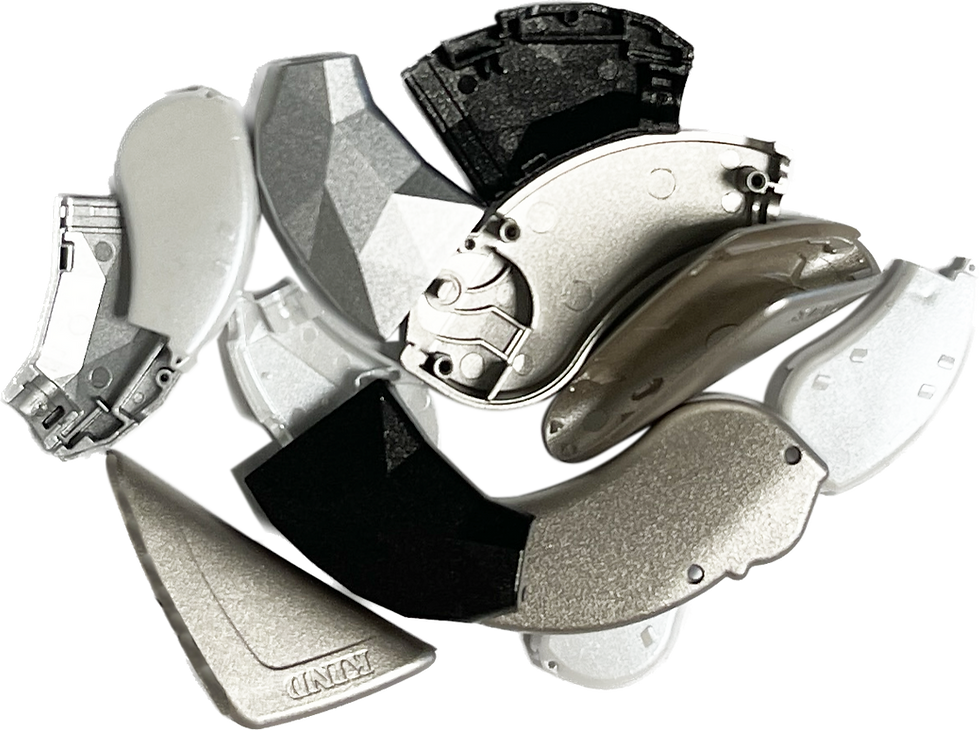How Additive Manufacturing Complements Injection Molding in Medical Device Production
- Adam Johnston
- Nov 3
- 3 min read
Summary: Additive manufacturing (aka 3D printing) accelerates medical device development by enabling rapid prototyping, design validation, and low-volume production of complex components. Once designs are finalized, injection molding takes over to deliver scalable, highly precise, and cost-efficient production that meets stringent medical quality and regulatory standards.
Time, precision, and reliability are paramount in medical device manufacturing. As healthcare technologies evolve, manufacturers are embracing additive manufacturing (aka 3D printing) and injection molding as complementary tools that enable speed, flexibility, and scalability from concept to commercialization.
Additive Manufacturing Empowers Rapid Innovation
Additive manufacturing has transformed how engineers and designers approach product development. In the In’Tech Industries 3D printing lab, we can print complex geometries directly from digital files. This empowers you to evaluate form, fit, and function in a matter of days, not weeks.
For medical device design, this agility is essential. With rapid prototyping at In’Tech, your engineering team can quickly iterate on their device design, assessing ergonomics, material compatibility, and sterilization performance.
· Prototype validation: 3D printing allows you to test realistic, functional prototypes early in the development process.
· Low-volume production: Additive manufacturing is ideal for producing pilot batches, clinical trial units, or highly customized medical components that don’t justify the cost of tooling.
· Design flexibility: Complex features, such as lattice structures, ergonomic contours, and internal channels, can be produced without traditional machining or mold constraints.
If want to bring your ideas to life faster and validate designs before investing in high-volume production, additive manufacturing with In’Tech may be the solution you’re looking for.
Moving from Prototype to Production
Once you have validated your design with rapid prototyping in our 3D printing lab, it is time to scale production efficiently and consistently. For many projects, this is when In’Tech’s injection molding services take center stage.
With decades of expertise and experience, our injection molding capabilities deliver repeatable, high-precision parts at scale. These are essential factors in regulatory compliance, device consistency, and cost efficiency. When precision tooling is a better fit for your product, the In’Tech precision tooling team can replicate the exact dimensions, surface finishes, and material properties that were approved during validation. This ensures every unit meets your strict medical quality standards.
When you pair In’Tech’s injection molding and precision tooling capabilities, you enjoy these key advantages:
1. High-volume scalability: Once tooling is complete, we can produce thousands of identical components efficiently.
2. Material consistency: Medical-grade thermoplastics such as polycarbonate and polypropylene can be molded with tight tolerances and predictable mechanical performance.
3. Regulatory reliability: Injection-molded parts can be validated under FDA and ISO guidelines, ensuring traceability and repeatability.
In many cases, what we learn in the rapid prototyping stage directly informs mold design and tooling parameters during production.
The future of medical manufacturing includes the rapid iterating additive manufacturing allows with the precision, scalability, and cost effectiveness of injection molding and precision tooling.
By integrating these processes, you gain the best of both worlds for safer, smarter, and more effective end products. To learn more about In’Tech’s additive manufacturing, injection molding, and engineering services, contact our team today.
Additive Manufacturing FAQs
How does additive manufacturing benefit medical device prototyping?
3D printing allows engineers to quickly create and test functional prototypes, evaluate design performance, and make improvements before investing in tooling, reducing development time and risk.
When should manufacturers transition from 3D printing to injection molding?
Once the design has been validated and demand increases, manufacturers shift to injection molding to achieve consistent quality, higher volumes, and lower per-part costs.
Why is injection molding important for medical devices?
Injection molding provides the precision, repeatability, and material consistency required for regulatory compliance and large-scale production in the medical industry.
Can 3D printing and injection molding be used together in production? Yes. Many manufacturers use 3D printing for design validation and short runs, then leverage injection molding for mass production, creating a flexible, cost-effective manufacturing workflow.





Comments